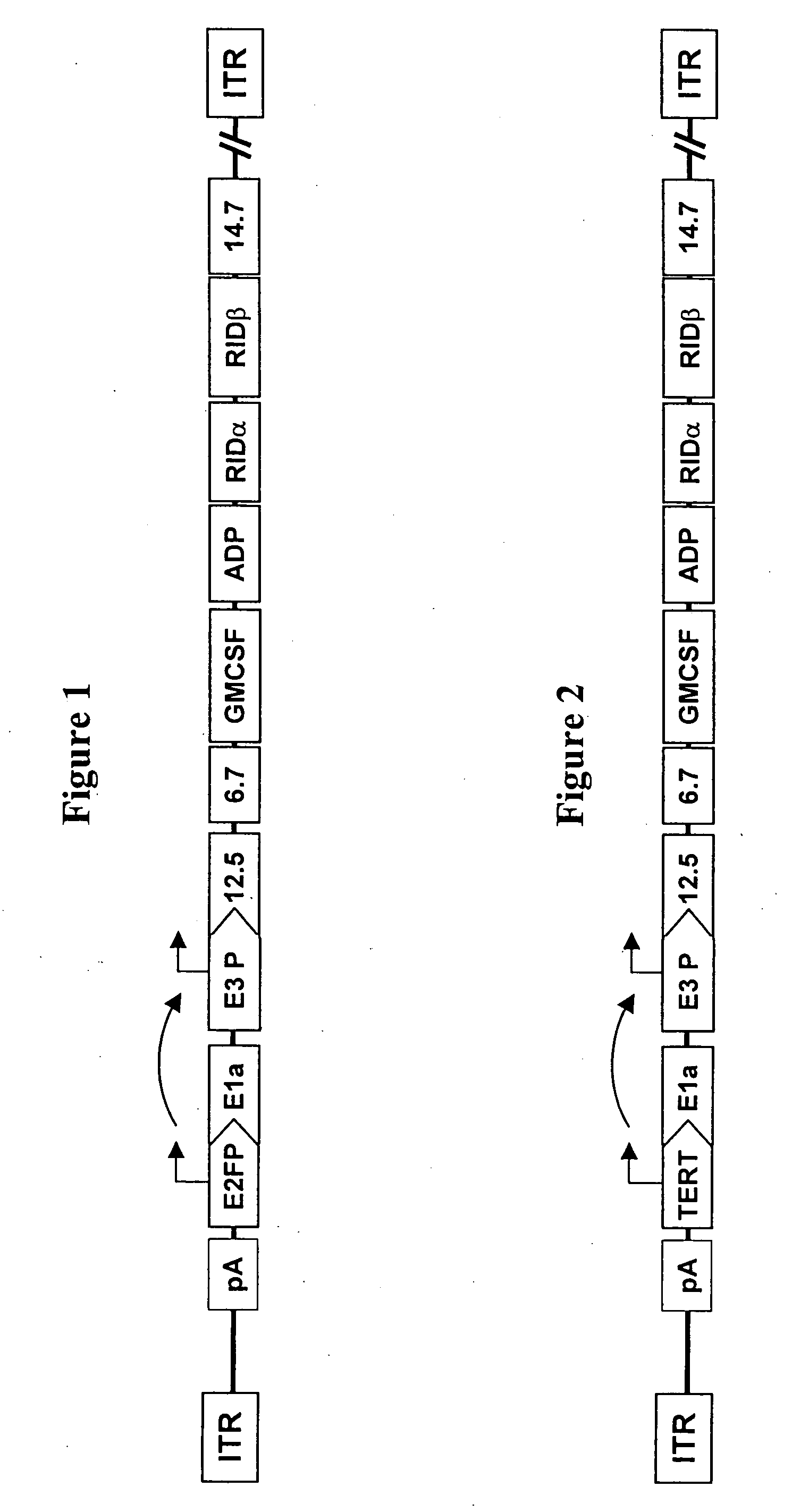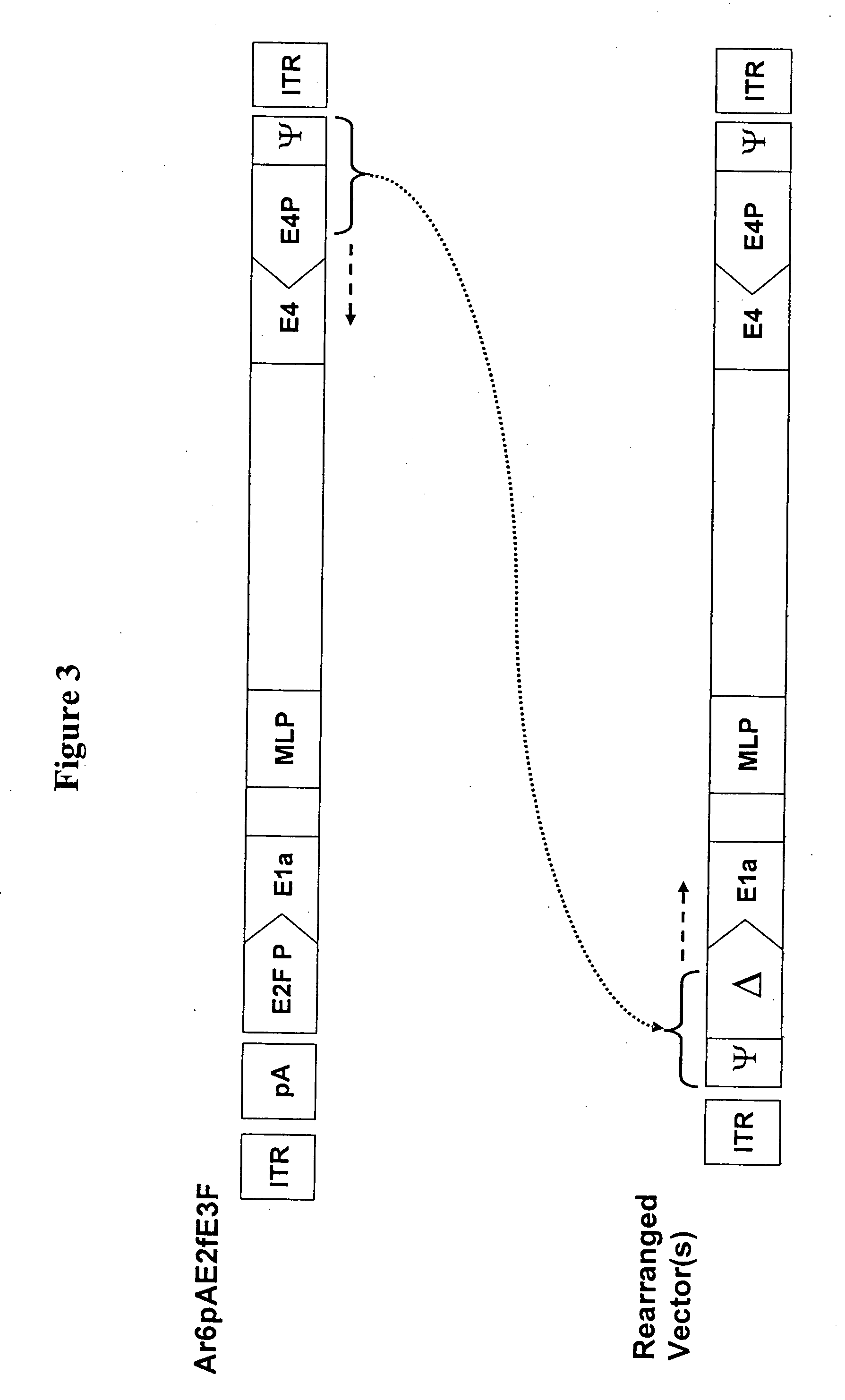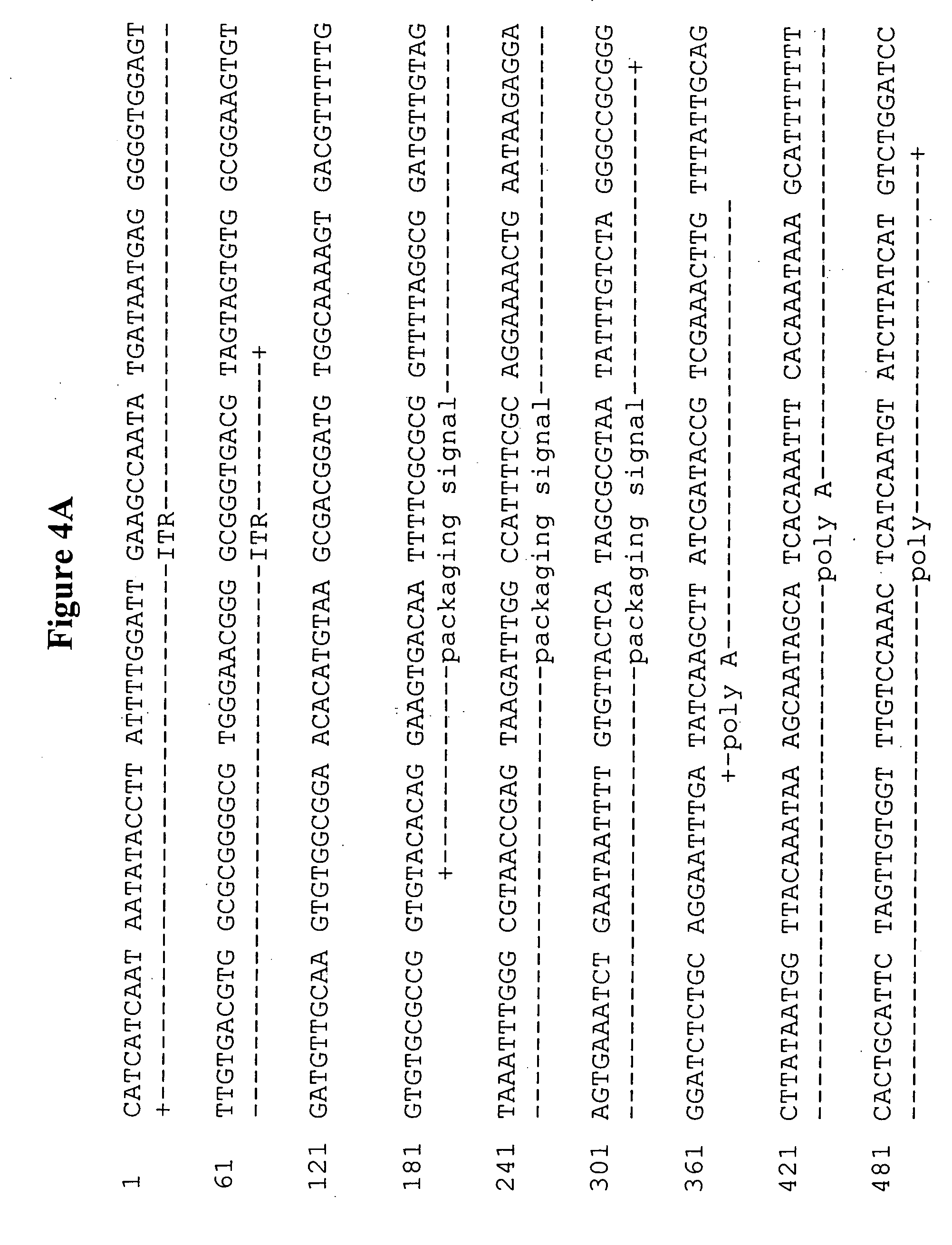Oncolytic adenoviral vectors encoding GM-CSF
a technology of adenoviral vectors and vectors, applied in the field of neoplastic disease treatment, can solve problems such as cell lysis
- Summary
- Abstract
- Description
- Claims
- Application Information
AI Technical Summary
Benefits of technology
Method used
Image
Examples
example 1
Construction of Ar20-1007 and Ar20-1004
[0121] Plasmid pDR1F was derived from the ligation of StuI / MfeI fragments of pDr1FRgd (9731 bp) and pDr2F (867 bp). Plasmid pDr1FRgd was the product of the ligation of a 10132 bp AvrII,ClaI fragment of p5FIxHRFRGDL (Hay et al., Enhanced Gene Transfer to Rabbit Jugular Veins by an Adenovirus Containing a Cyclic RGD Motif in the HI Loop of the Fiber Knob, J Vasc Res 38:315-323 2001) with a 495 bp / AvrII,ClaI fragment of a 595 bp PCR product of p5FIxHRFRGDL that introduced a SwaI site to the vector. Plasmid pDR1F was used in the generation of adenoviral right end donor plasmids.
[0122] Adenovirus right donor plasmids were constructed for Ar20-1007 (carrying human GM-CSF cDNA) and Ar20-1004 (carrying mouse GM-CSF cDNA) viral vectors. Donor plasmid pDr20hGmF carrying the human GM-CSF cDNA with the left end ψ and the E2F-1 promoter was generated from recombination between plasmids pDR1F and pAr15pAE2fhGmF (described in WO 02 / 067861). Similarly, plasm...
example 2
Construction of Ar20-1006 and Ar20-1010
Large plasmids pAr20pATrtexhGmF and pAr20pATrtexmGmF were generated as follows:
[0135] The pDL5pATrtexF plasmid was digested with restriction enzymes AseI and BlpI, and electrophoresed in a 0.8% agarose gel to confirm the expected 9316 bp and 2140 bp DNA fragments. The digested DNA was cleaned with chloroform / phenol solution. The plasmids pAr20pAE2fhGmF and pAr20pAE2fmGmF were digested with restriction enzymes BstBI and BstZ171, and electrophoresed in a 0.8% agarose gel to confirm the expected DNA fragments. One hundred ng of AseI / BlpI digested pDL5pATrtexF (9316 bp fragment) and 100 ng of BstBI / BstZ171 digested pAr20pAE2fhGmF (32249 bp fragment) or pAr20pAE2fmGmF (32276 bp fragment) were co-transformed into BJ5186 cells. DNA minipreps from several colonies were digested with AscI. The colonies that matched the predicted RE pattern were transformed into DH5ax cells to be amplified. The final plasmids pAr20pATrtexhGmF and pAr20pATrtexmGmF were...
example 3
Confirmation of E2F disregulation as target of Ar20-1007 Rationale
[0139] GM-CSF was cloned into a position under the control of the adenoviral E3 promoter. The E3 promoter is, in turn, transactivated by E1A (Horwitz M S. Adenoviruses. In: “Fields Virology, third edition,” ed Fields B N, Knipe D M, Howley P M, et al., Lippincott-Raven Publishers, Philadelphia, 1996, pp 2149-2171). Thus, ultimate control of the E3 promoter should be the result of the specificity of the E2F-1 promoter regulating the expression of the E1a gene. The Wi38-VA13 (VA13) cell line is an SV40 large T antigen (T-Ag) transformed derivative of Wi38 normal human diploid fibroblast cells. The T-Ag binds the Rb / E2F complex, resulting in the release of the E2F-1 transcription factor that is capable of activating its own promoter. As a result, VA13 cells have higher levels of E2F-1 mRNA. The location of the packaging signal ψ may impact on the selectivity of the promoter. Thus, this same cell pair was used as a model...
PUM
| Property | Measurement | Unit |
|---|---|---|
| temperature | aaaaa | aaaaa |
| pH | aaaaa | aaaaa |
| volume | aaaaa | aaaaa |
Abstract
Description
Claims
Application Information
 Login to View More
Login to View More - R&D
- Intellectual Property
- Life Sciences
- Materials
- Tech Scout
- Unparalleled Data Quality
- Higher Quality Content
- 60% Fewer Hallucinations
Browse by: Latest US Patents, China's latest patents, Technical Efficacy Thesaurus, Application Domain, Technology Topic, Popular Technical Reports.
© 2025 PatSnap. All rights reserved.Legal|Privacy policy|Modern Slavery Act Transparency Statement|Sitemap|About US| Contact US: help@patsnap.com



